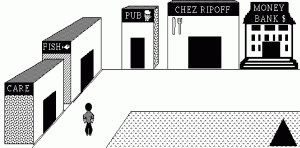Every year of late, Jane Hart has polled about people’s top 10 learning tools. From this, she creates a list of the top 100 learning tools. It’s a fun and valuable exercise, so as usual I’ll weigh in with mine (in no particular order). Looking at last year’s post, I see I’ve switched from Google to DuckDuckGo (privacy issues), and from Skype to Zoom (functionality). And I mention email over Slack, the former of which I may not always mention but use, versus Slack which has kind of slowed down for me.
- DuckDuckGo: a search engine is my first recourse when I have questions. And not liking the tracking, I’ve switched and made DDG my default.
- Twitter: drinking from the fire hose that is twitter is one way I see what other people are talking about. And share what I discover.
- Mail: I still use email (yeah, I know). I talk to people that way, and respond to requests, but also get questions answered and pointers to things. (I’m bad about using the phone, mea culpa.)
- GoodReader: I use GoodReader on my iPad to read longish PDFs, white papers, and things. Also to read and mark up the journal or conference submissions I review. Or for requests for colleagues.
- MS Word: writing is one of the first ways I make sense of the world. Articles, columns, books. And they all get written in Word. I wouldn’t mind disentangling myself, but it’s pretty much a lingua franca and has industrial-strength outlining, which I rely on for longer writing.
- WordPress (e.g. this blog): is the other way I write and make sense of the world. It gets autoposted to LinkedIn and Facebook (at least, notifications), so comments there or here are a way for me to learn.
- Keynote is the presentation tool I use, and I create the stories I present at conferences in Keynote.
- OmniOutliner: another tool I use to be organized is OmniOutliner. Outlines are great ways for me to think in, or even just related columns. I can’t see how to do the outline function as well in something like a spreadsheet, or I would, because the columns in OO are, well, very expensive to upgrade.
- Omnigraffle: another way I make sense is to diagram. And…while I’m a bit grumbly at their support right now, OmniGraffle is still my ‘go to’ tool for this. I don’t need all the power, and it’s expensive, but I haven’t found a replacement yet that works as intuitively.
- Zoom: I’ve pretty much switched to Zoom over Skype, so talking to my ITA colleagues, or having video chats with folks is most often through Zoom these days.
Please do share your list, too!




